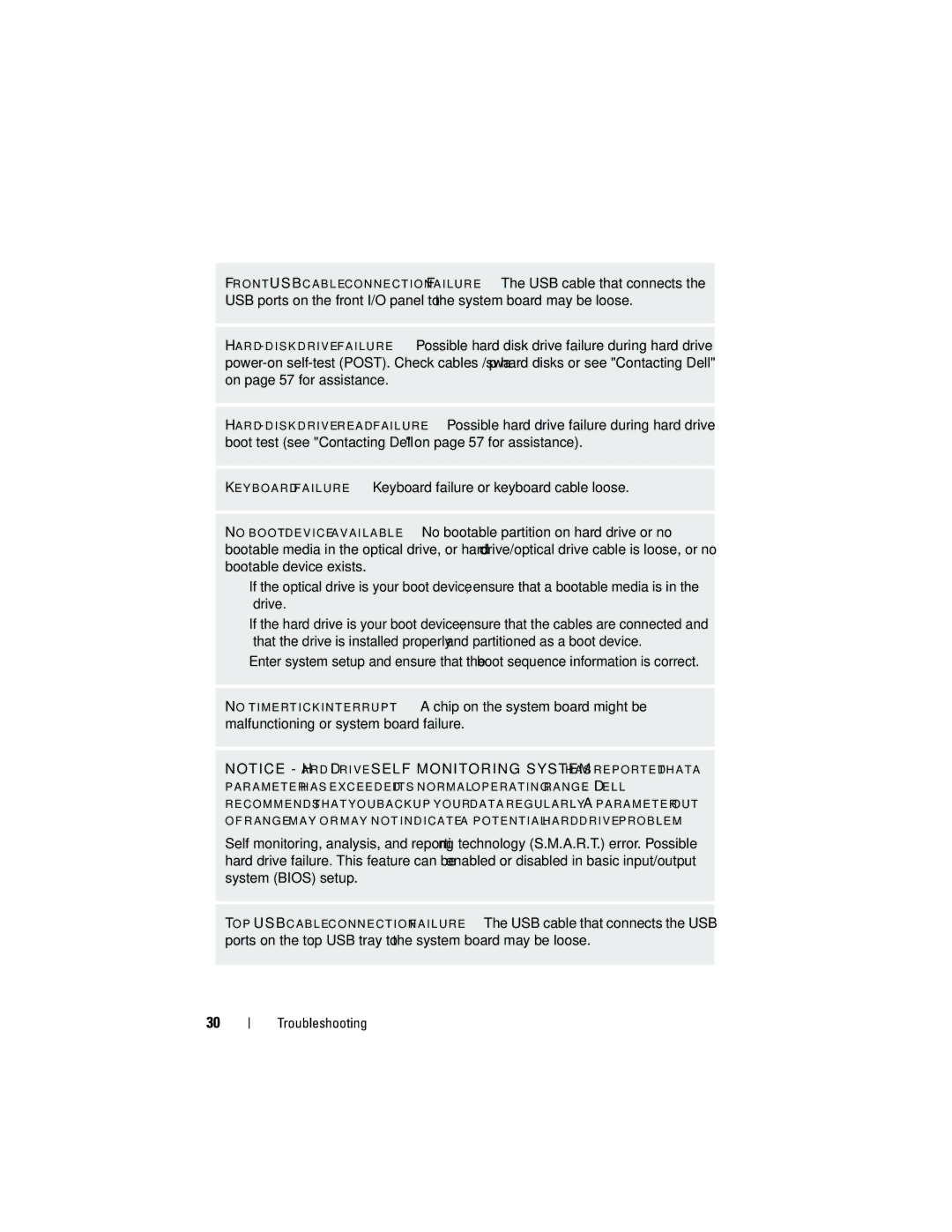
F R O N T USB C A B L E C O N N E C T I O N F USB ports on the front I/O panel to
A I L U R E — The USB cable that connects the the system board may be loose.
H ARD - DISK DRIVE FAILURE — Possible hard disk drive failure during hard drive
H ARD - DISK DRIVE READ FAILURE — Possible hard drive failure during hard drive boot test (see "Contacting Dell" on page 57 for assistance).
K EYBOARD FAILURE — Keyboard failure or keyboard cable loose.
N O BOOT DEVICE AVAILABLE — No bootable partition on hard drive or no bootable media in the optical drive, or hard drive/optical drive cable is loose, or no bootable device exists.
•If the optical drive is your boot device, ensure that a bootable media is in the drive.
•If the hard drive is your boot device, ensure that the cables are connected and that the drive is installed properly and partitioned as a boot device.
•Enter system setup and ensure that the boot sequence information is correct.
N O TIMER TICK INTERRUPT — A chip on the system board might be malfunctioning or system board failure.
NOTICE - H ARD D RIVE SELF MONITORING SYSTEM HAS REPORTED THAT A PARAMETER HAS EXCEEDED ITS NORMAL OPERATING RANGE . D ELL RECOMMENDS THAT YOU BACK UP YOUR DATA REGULARLY. A PARAMETER OUT OF RANGE MAY OR MAY NOT INDICATE A POTENTIAL HARD DRIVE PROBLEM . —
Self monitoring, analysis, and reporting technology (S.M.A.R.T.) error. Possible hard drive failure. This feature can be enabled or disabled in basic input/output system (BIOS) setup.
TOP USB CABLE CONNECTION FAILURE — The USB cable that connects the USB ports on the top USB tray to the system board may be loose.
30
Troubleshooting
